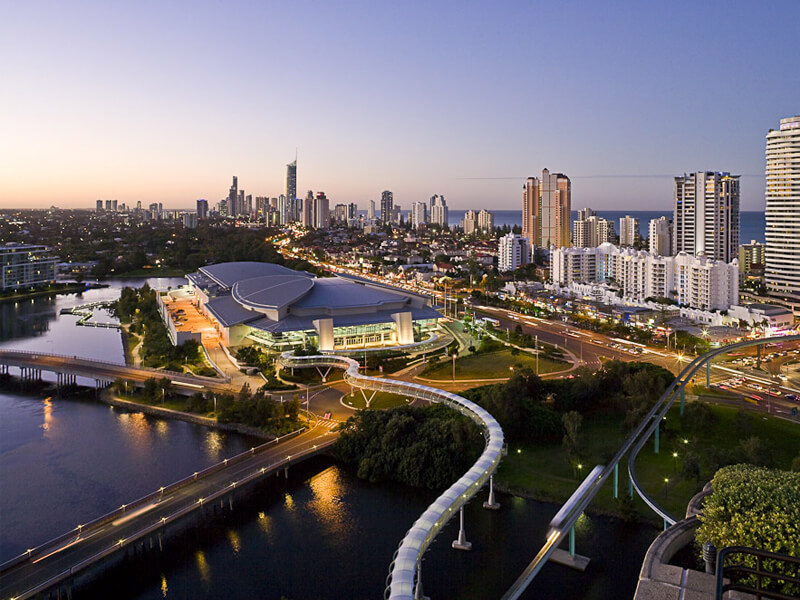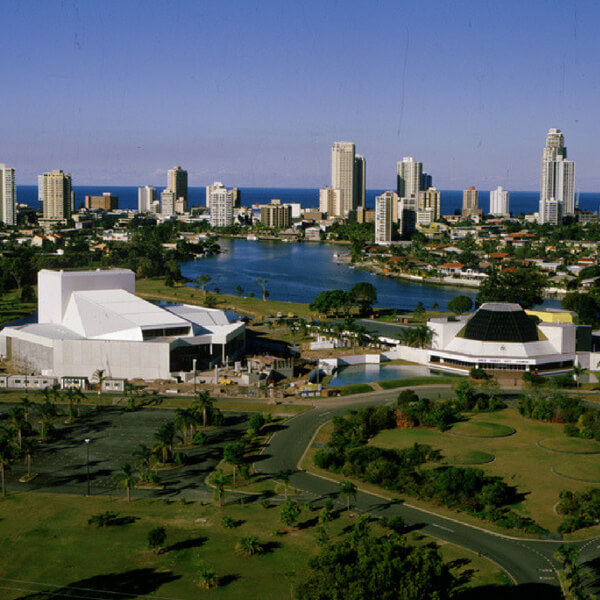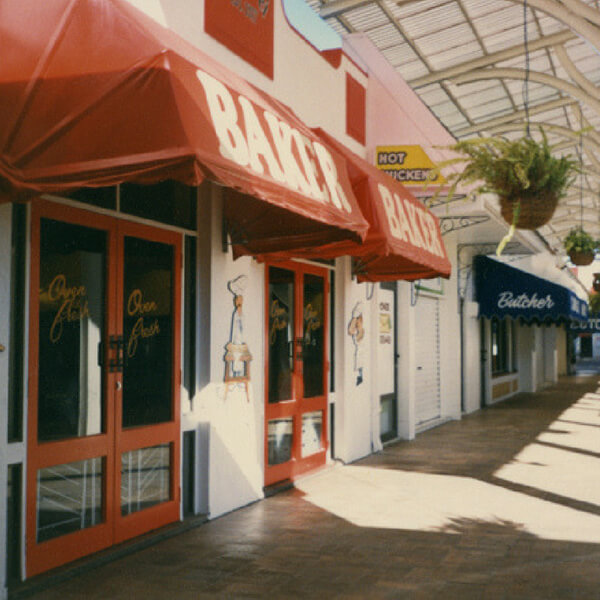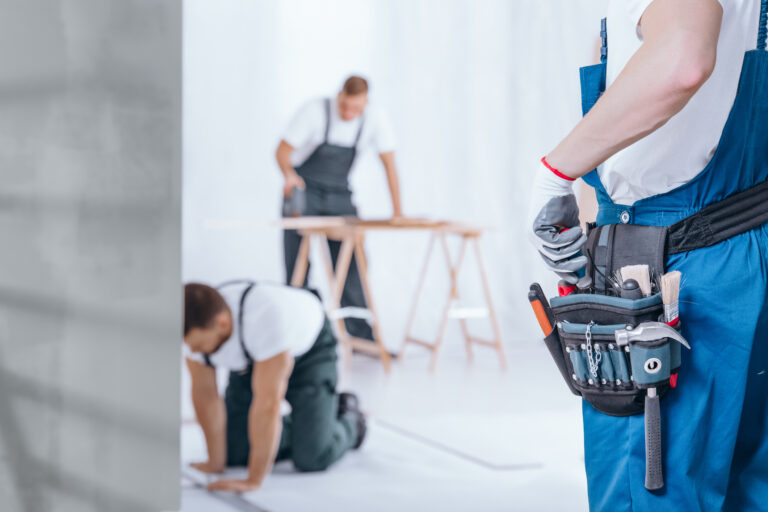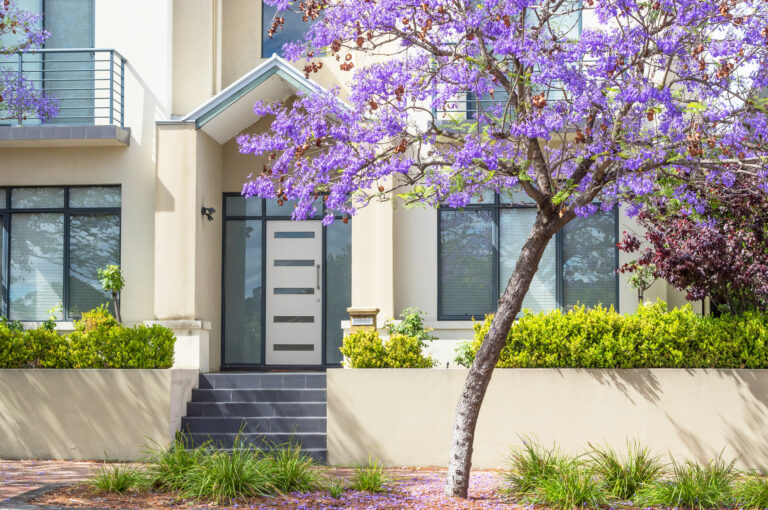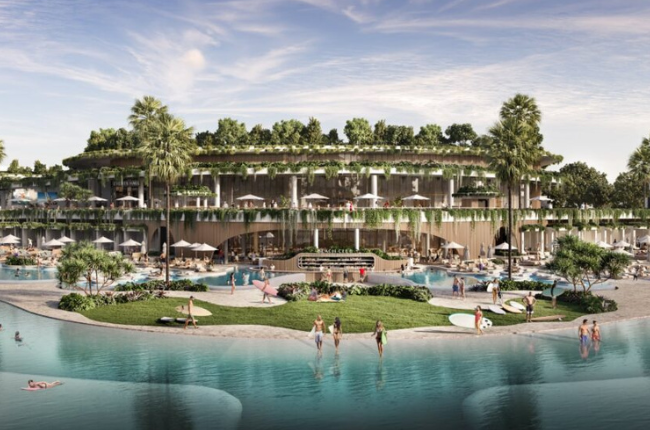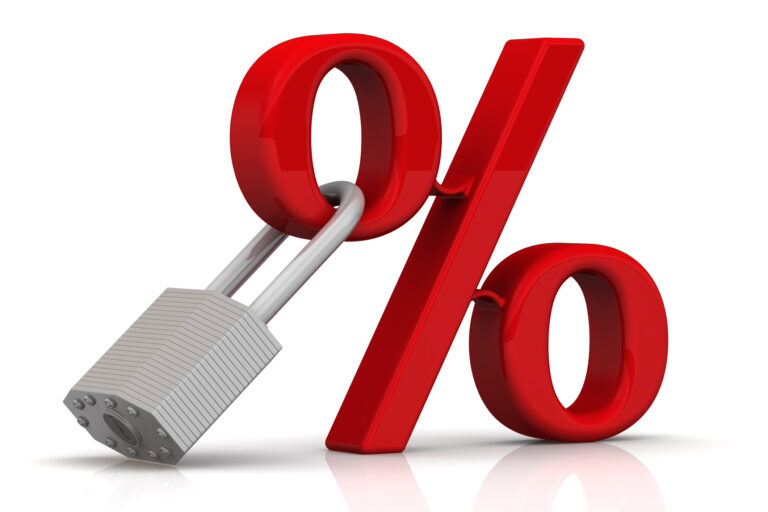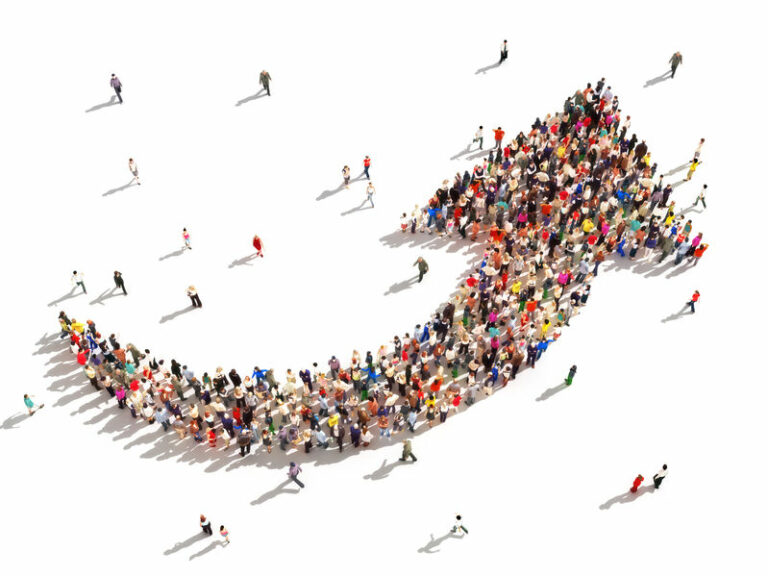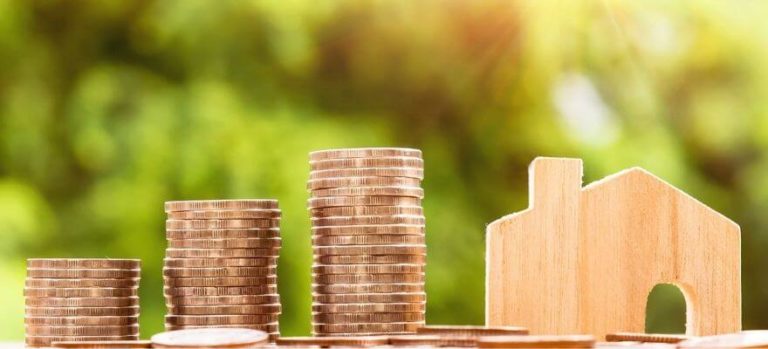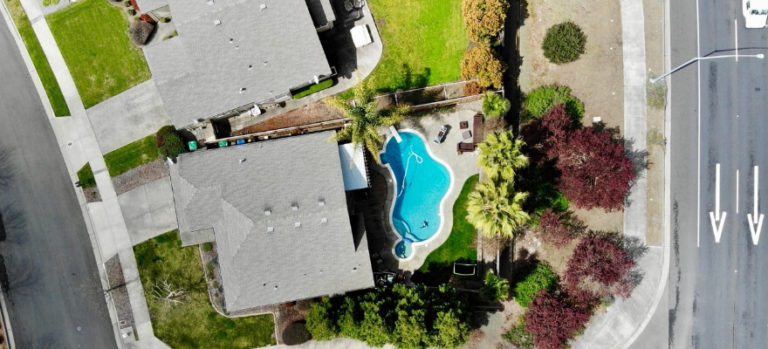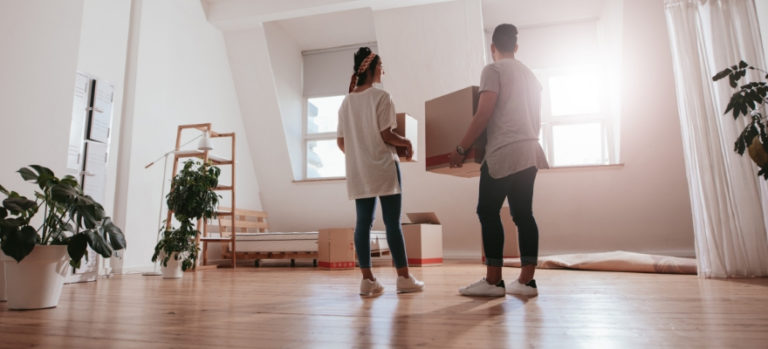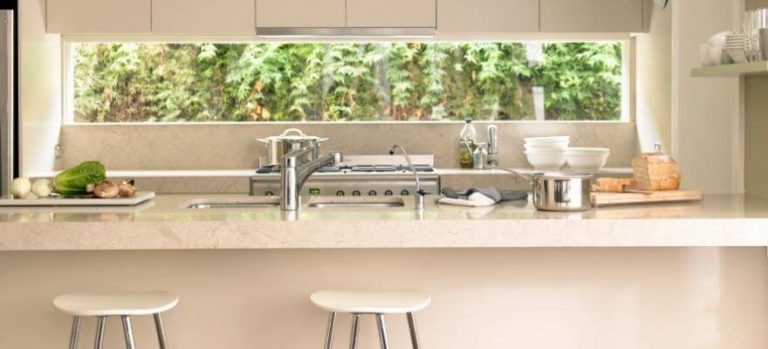From ‘The Rise of Paradise’, came the downturn of the 80s. With financial hardship taking its toll, the rapid growth of the Gold Coast came to a halt. This fight for growth continued into the 90s, where a few Gold Coast developers managed to succeed in creating some of the iconic buildings of today. But, it wasn’t until the lead up to the 2000s that the Gold Coast rehabilitated its rapid growth and managed to strongly reaffirm itself as Australia’s number one nightlife party town.
Aerial view of the Gold Coast City Council Administration Centre and the Gold Coast Arts Centre, 135 Bundall Road, Evandale, Surfers Paradise, Queensland, looking east towards Surfers Paradise, circa 1990s.
Gold Coast History: 1980s-2000s
The growth of high-rises and the significant infrastructure boom of the 1960s continued on the Gold Coast up until the late 1980s.
The recession of the early 1990s brought an economic downturn TO ALL Australian cities and the property industry on the Gold Coast was hard hit. With development now at a standstill, it was the first time since the early 60s that the Gold Coast wasn’t experiencing rapid growth.
There were a few exceptions to the development decline of this era, which also saw the completion of major landmark projects including: Grundy’s, Surfers Paradise Marriot Resort & Spa, Robina Town Centre, and Conrad Jupiter’s Casino. All of these popular and highly successful developments opened their doors between the 80s and 90s. Despite the struggling recession of the early 90s, Pacific Fair proved to also be one of these exceptions.
Retail shops in Pacific Fair Shopping Centre, Broadbeach, Queensland, 1980s / J. Pritchard, photographer.
Though Pacific Fair was first built in the early 1970s, it only became known as the ‘Pink Palace’ following its 1987 $200 million renovation, which included the famous pink paint job and a 87,500 square metre expansion. Leaping ahead of the waning Southport Sundale shopping centre, by 1987 more than 13 million people were visiting Pacific Fair each year with recorded retail sales in excess of $180 million.
This slow growth of new development had some upsides, one of which was the implementation of many city beautification projects. Notably among these was the suburb of Ashmore, which was the first suburb on the Gold Coast to have roadside bike paths and a roundabout.
Leading up to the 2000s, the Gold Coast began to strongly reaffirm itself as a nightlife party town, with many new nightclubs and late night venues beginning to be constructed. Surfers Paradise’s ‘glitter strip’ continued to light up the city each night with holiday visitors from all over Australia and the world coming in droves to experience the fun.
Gold Coast Circa 1980 Part 1
1980s-2000s impacting moments on the Gold Coast:
- 1980 – Surf Life Savings Club welcomes females as active members.
- 1980 – The southernmost tip of Stradbroke Island was reclaimed to form the north side of the Gold Coast Seaway.
- 1980 – Influx of Japanese investment in Surfers Paradise.
- 1981 – Gold Coast Airport terminal at Coolangatta opens.
- 1981 – Grundy’s, the family fun centre, opens its doors with four beachfront waterslides. Today, its location is the home of Surfers Paradise Centro.
- 1981 – Dreamworld theme park opens its doors.
- 1981 – The first stage of housing blocks entered the market for the master planned community of Robina.
- 1982 – Robina’s first series of artificial freshwater lakes – called Lake Hugh Muntz, covering 17-hectares – was completed.
- 1985 – The Conrad Jupiter’s Casino opens.
- 1986 – Funded by the Gold Coast City Council, The Gold Coast City Art Gallery opens as part of the Gold Coast Arts Centre.
- 1987 – Pacific Fair undergoes a $200 million renovation, transforming it into the famous ‘pink palace’, what it would become known as around the world.
- 1989 – Established a year prior, Bond University in Robina opens for enrolment with an intake of 322 students.
- Late 1980s – Niecon Plaza in Broadbeach – a shopping centre and unit complex developed by the Nikiforides Group – opened its doors.
- Early 1990s – Surfers Paradise Marriott Resort & Spa is built, sparking a new era of international hotels on the Gold Coast.
- 1991 – The Inaugural Gold Coast Indy 300 arrives in Surfers Paradise.
- 1991 – Movie World amusement park opens its doors.
- 1994 – Gold Coast City and part of Albert Shire merge to become a new local authority called the Gold Coast City Council (GCCC).
- 1996 – Robina Town Centre opens, making a community of services in the area – such as: schools, hospitals, rail link, police and fire stations – a reality.
Images: Copyright held by Gold Coast City Council.
